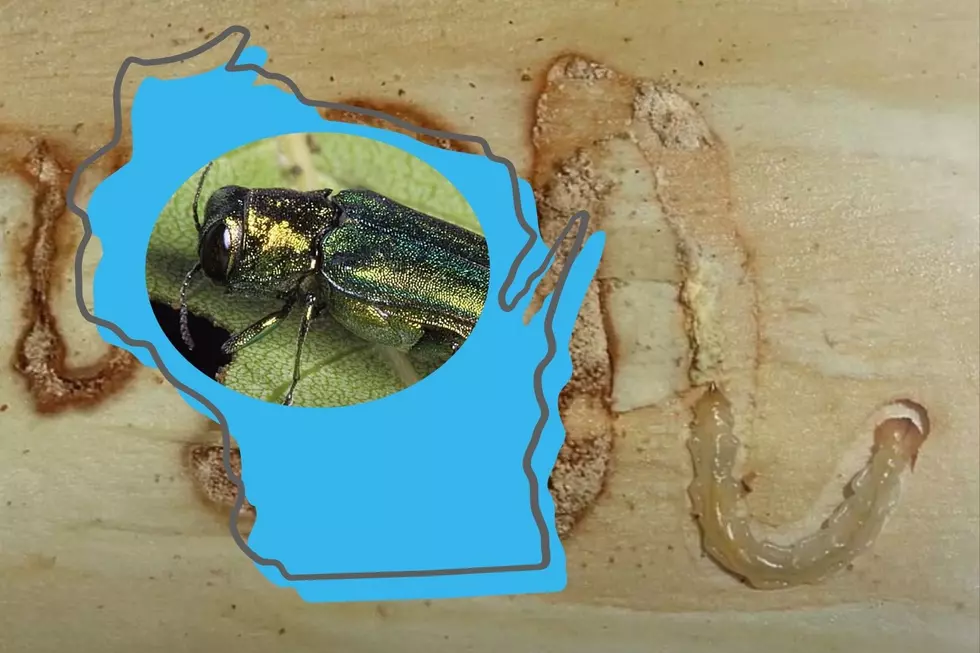
Tree-Killing Pest Spreads Across Wisconsin- Infects Two More Counties, Just One Left
The Wisconsin Department of Natural Resources (DNR) has recently detected the presence of the invasive emerald ash borer (EAB) in Washburn and Taylor counties for the first time. This discovery marks a significant expansion of EAB's range within the state, leaving only Burnett County untouched since the insect was first discovered in Wisconsin in 2008.
A map of current EAB infestations in Wisconsin.
DNR staff members collected larvae samples in the town of Springbrook and the city of Medford, where a USDA Animal and Plant Health Inspection Service identifier confirmed these larvae as EAB. While these detections won't result in regulatory changes due to EAB's federal deregulation in 2021 and the rescinded statewide quarantine in 2023, the implications for Wisconsin's ash populations are profound; not to mention the overall cost of lost trees and expenses to irradicate infestations.
The spread of EAB in northern Wisconsin is anticipated to have a substantial impact on the state's ash trees. With 66 new municipal detections already reported in 2024, regular updates on EAB's spread are crucial. Residents and authorities are encouraged to stay informed by reviewing the DNR's updated EAB webpage for information and resources on managing this invasive species.
Adult Emerald Ash Borer
Treatment options for ash trees affected by EAB are available, with the University of Wisconsin-Madison's EAB webpage offering guidance on insecticide treatment. However, prevention remains a key aspect of EAB management. The introduction of biological control measures, such as non-stinging wasps like Oobius agrili and larval parasites including Tetrastichus planipennisi, Spathius agrili, and Spathius galinae, has shown promising results in reducing EAB populations.
These parasitoid wasps lay their eggs inside or on the surface of EAB eggs or larvae, effectively disrupting the insect's life cycle. Since 2007, over 5 million parasitoid wasps have been released in affected areas, with some locations reporting up to 80% of EAB larvae being parasitized. So far, this seems to be the most efficient way of protecting Wisconsin's estimated 700 million ash trees from the deadly beetle and its spread.
Here's how the ash borer kills your tree.
In addition to biological control measures, proactive steps such as the prohibition of uncertified firewood entry onto state DNR-owned properties and the implementation of treatment options for ash trees are essential in combating the spread of EAB. Community awareness and engagement, coupled with ongoing monitoring and management efforts by authorities and organizations, are vital in preserving Wisconsin's ash trees and mitigating the impact of the emerald ash borer.
By staying informed, adopting preventive measures, and supporting local efforts, residents can contribute to the protection of Wisconsin's ash resource and area ecosystems. Together, we can work towards minimizing the impact of EAB and safeguarding the natural beauty and biodiversity of Wisconsin for generations to come.
Quiz: Do you know your state insect?
Gallery Credit: Andrew Vale
LOOK: Here are 25 ways you could start saving money today
Gallery Credit: Bethany Adams
More From Eagle 102.3









